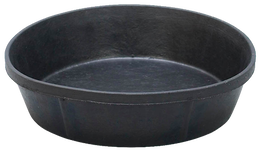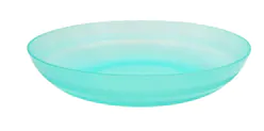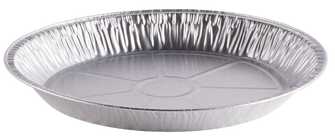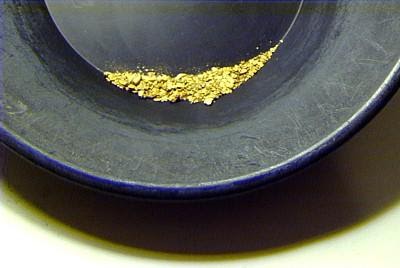EIS 14: Panning for Gold
In this lesson, you learned how particles sort under different conditions. But don’t just take my word for it, you’re a scientist! You can test particle sorting for yourself! And that is exactly what this EIS will have you doing: seeing for yourself how particle sorting works. Hopefully, you’ll have a much better feel for it by the end of the activity. You may even find gold!
Materials
A circular pie pan. Any large, flat, circular dish will do if you don’t have a pie pan on hand. Be aware that this might cause some scratches, so don’t use anything that scratches easily or that you’re really concerned about the appearance of. A rectangular pan will also do in a pinch, but it is typically easiest with a round pan. Examples:
- Rocky sediment (dirt) or gravel, ideally with rocks of different shapes, sizes, and densities. We want it to be more rock than dirt, otherwise you will just end up with mud.
- Plenty of water. You could do this inside over the kitchen sink, but be aware that it can get messy. Outside is best, preferably by a stream or lake or with a large bucket of water. A hose will also do.
Procedure
- Go to a nearby stream with open access. If a stream is not available, then you can do this anywhere there is water and sand or gravel. Streams have the highest chance of including gold, but that chance is quite small, anyway. (Be sure you have the permission of your relevant responsible adult before you leave home).
- Using your circular “pan”, scoop up as much gravel as you can from the river bed or shoreline. Be sure that all the particles are submerged in water. Alternately, load your pan with dry, rocky sediment and add enough water that everything becomes submerged.
- Remove all large rocks—they will interfere with the panning—and aim to have particles of similar size.
- Shake the bowl from right to left so that the gravel moves, but not out of the pan. Everything should be kept inside the pan at this stage. Spend about thirty seconds shaking.
- Remove the top layer off of the pan. This can be done manually or can be done by carefully submerging your pan in water and letting the stream water flow over it.
- Repeat steps 4 and 5 until almost all of the particles are gone. Remember to keep some water in the pan each time you shake.
- Remove all the water. Any gold in the water would be evident as gold nuggets or dust. The picture below shows an extremely large yield of gold.
This video will demonstrate how to pan for gold:
Bonus Activity: Mass of Shells
This activity is great if you live near a beach or large body of water. It’s especially fun if you enjoy searching for cool shells.
Materials
A kitchen scale (a scale capable of measuring small masses)
Procedure
- Go to your nearest beach or large body of water.
- Search around for some cool shells. Make a note of how far away you were from the water when you found each shell.
- Measure the mass of each shell. Were the ones found closer to the water heavier or lighter than the ones further away?
If you’re having fun, or you manage to find gold or anything else cool, we want to see it! If you have an Instagram and the permission of your relevant responsible adult, share a photo or video @eons_learning, #GoldPanningEons



